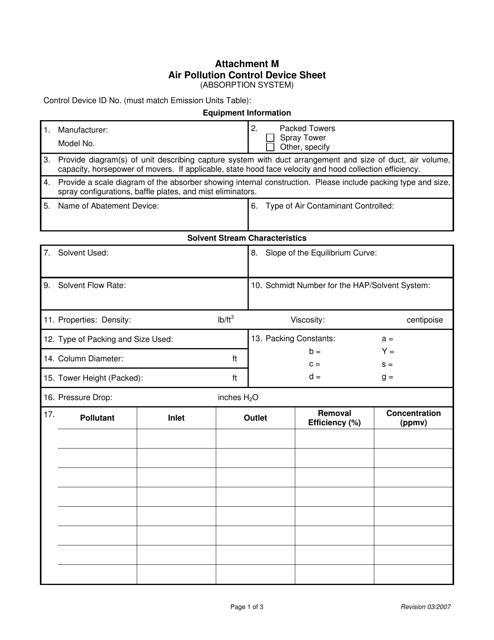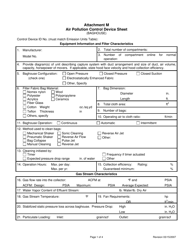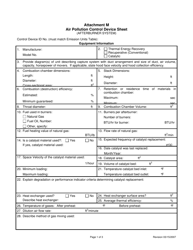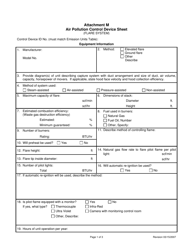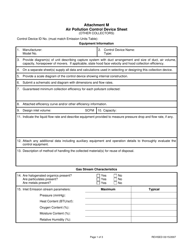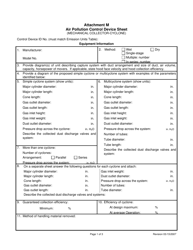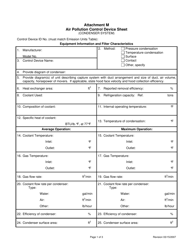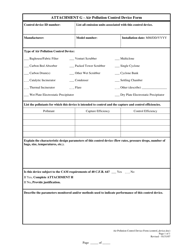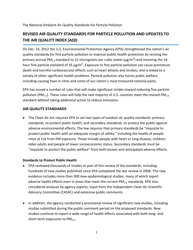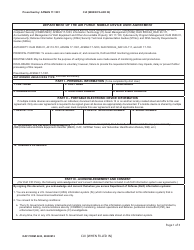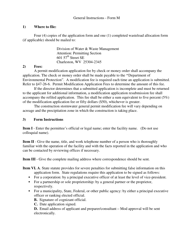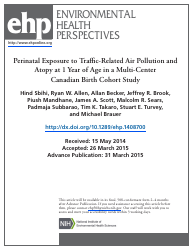Attachment M Air Pollution Control Device Sheet (Absorption System) - West Virginia
What Is Attachment M?
This is a legal form that was released by the West Virginia Department of Environmental Protection - a government authority operating within West Virginia. As of today, no separate filing guidelines for the form are provided by the issuing department.
FAQ
Q: What is an air pollution control device?
A: An air pollution control device is a system used to reduce or eliminate pollutants from air emissions.
Q: What is an absorption system?
A: An absorption system is a type of air pollution control device that uses a liquid or adsorbent material to remove pollutants from gas streams.
Q: What are the benefits of using an absorption system?
A: Using an absorption system can help reduce air pollution by removing harmful pollutants from industrial emissions.
Q: How does an absorption system work?
A: An absorption system works by passing gas streams through a liquid or adsorbent material, which captures and removes pollutants.
Q: What are some examples of pollutants that an absorption system can remove?
A: An absorption system can remove pollutants such as sulfur dioxide (SO2), nitrogen oxides (NOx), volatile organic compounds (VOCs), and particulate matter.
Q: Are absorption systems commonly used in West Virginia?
A: Absorption systems are commonly used in West Virginia and other states to control air pollution from various industries.
Q: What regulations govern the use of absorption systems?
A: The use of absorption systems in West Virginia is subject to state and federal air pollution control regulations.
Q: Are absorption systems effective in reducing air pollution?
A: Yes, absorption systems are effective in reducing air pollution by capturing and removing pollutants from gas emissions.
Q: What are some other types of air pollution control devices?
A: Some other types of air pollution control devices include electrostatic precipitators, baghouses, and catalytic converters.
Form Details:
- Released on March 1, 2007;
- The latest edition provided by the West Virginia Department of Environmental Protection;
- Easy to use and ready to print;
- Quick to customize;
- Compatible with most PDF-viewing applications;
- Fill out the form in our online filing application.
Download a printable version of Attachment M by clicking the link below or browse more documents and templates provided by the West Virginia Department of Environmental Protection.
